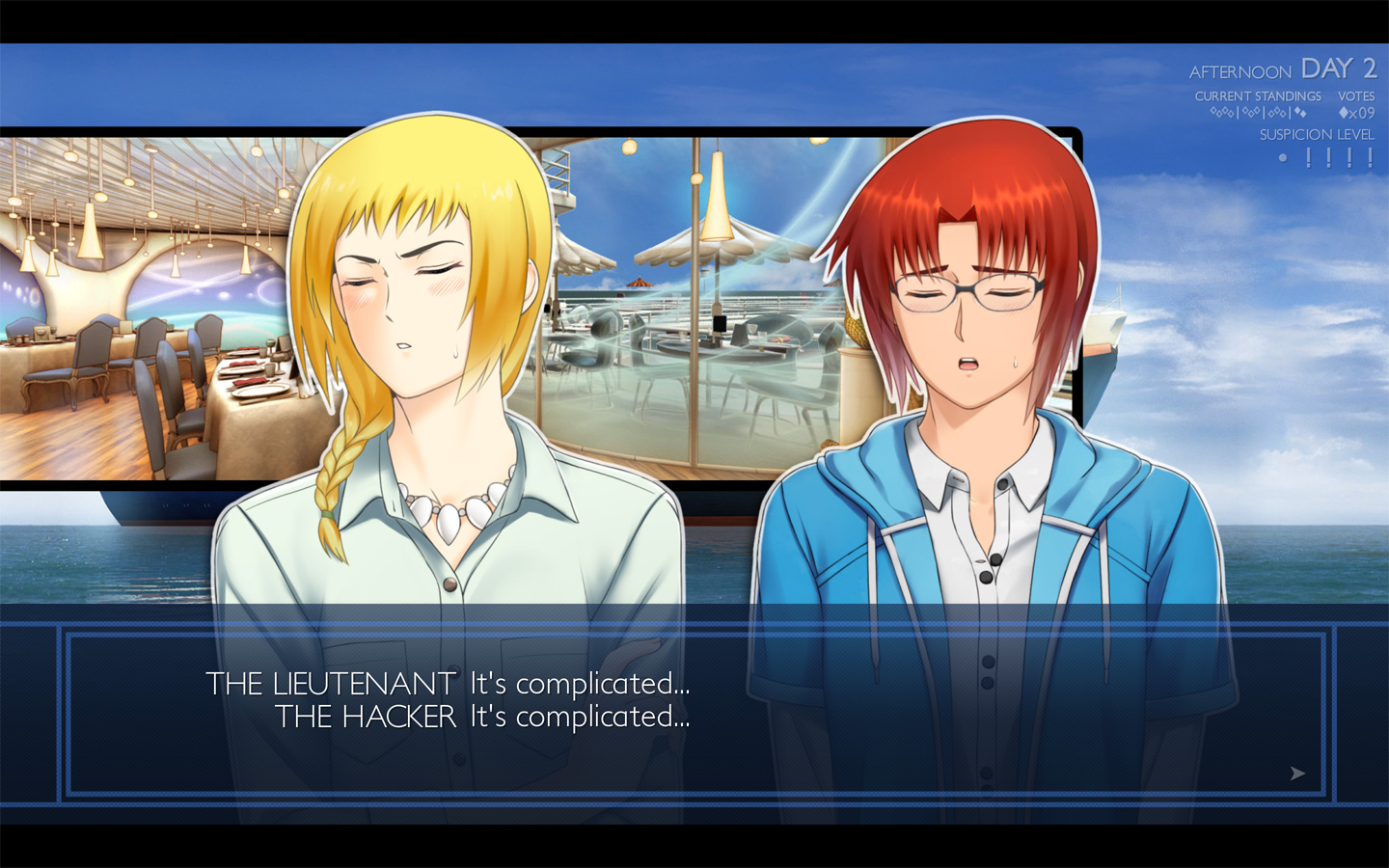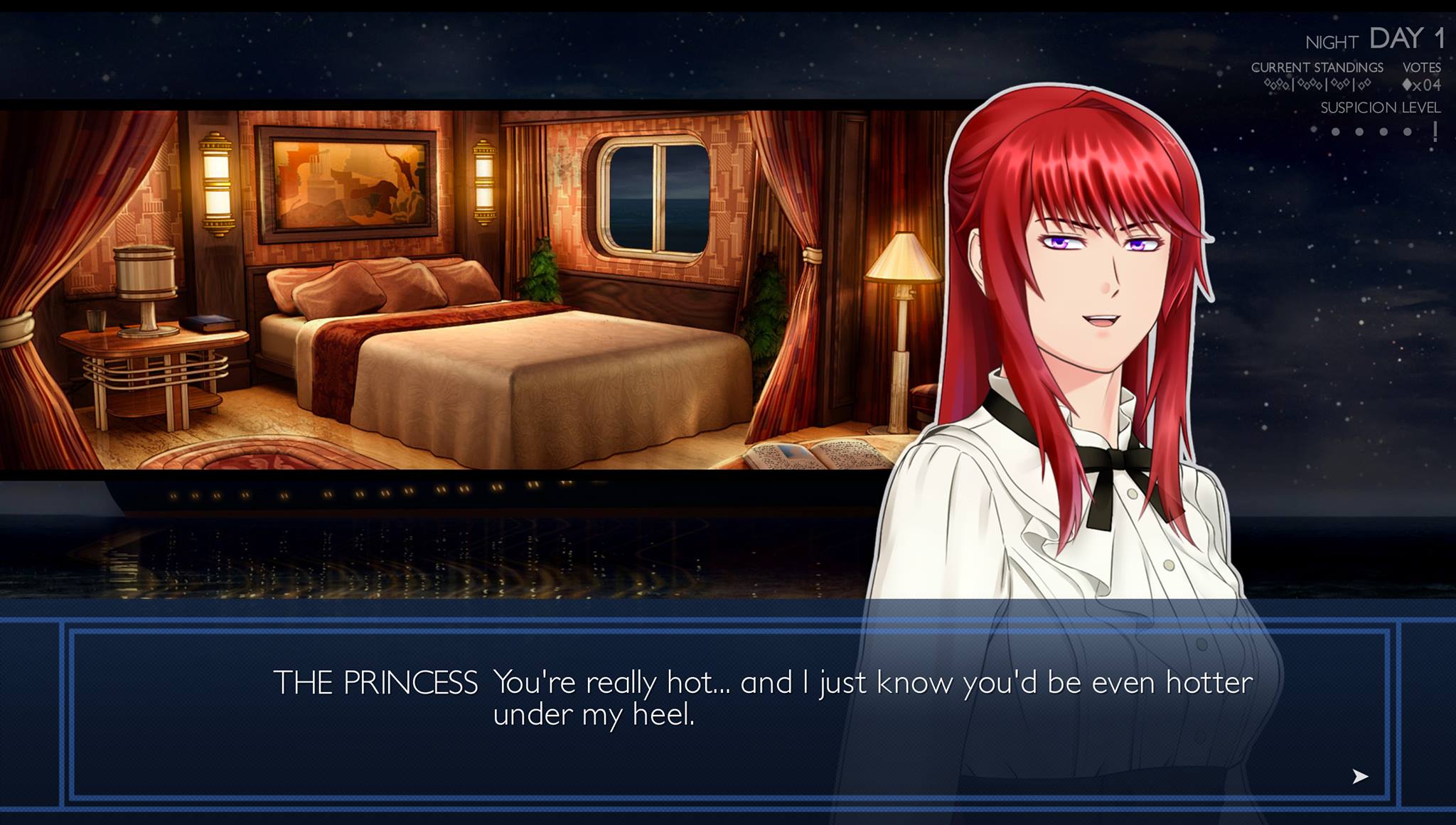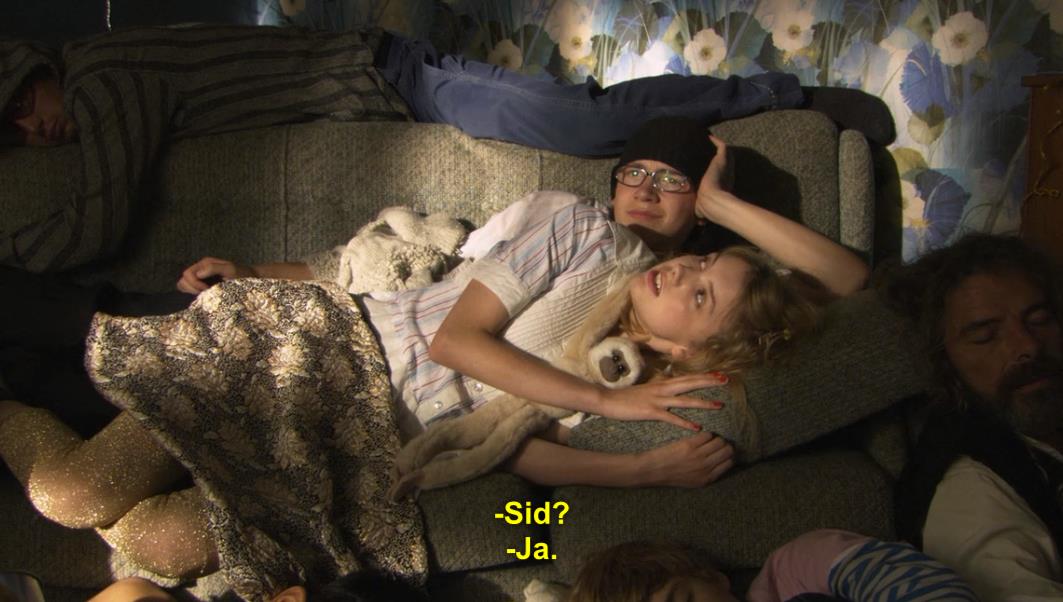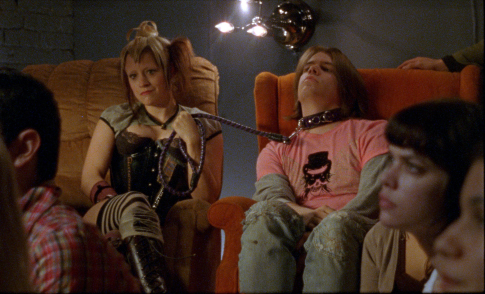
Dark, cute & queer – inspirational sources
I’ve been posting pictures on Instagram from inspirational sources for Knife Sisters, and it made me want to sum it up here as well, in a little more detail. First, the origins of a project are of course a multitude, from events in one’s own life, people you’ve met, experiences that are kept in the back of one’s head … but there are also sources of inspiration that are easier to track down, and those are the ones I’d like to talk about here.
When I started working on designing Knife Sisters about two years ago, there were two works specifically that affected me: Ladykiller in a Bind by Christine Love and the Wet Moon series by Sophie Campbell.
Ladykiller in a Bind – Christine Love, 2016
The lovely queer game, about The Beast who has to impersonate her own twin brother at a school cruise, came into my life at a point where I was struggling with how to tell the story of Knife Sisters in a game format. Ladykiller in a Bind offered an answer to that. Not only was I inspired by its theme and storytelling, but also by the functionality. I knew I had to be able to tell a complex, character driven story, but I also wanted to include game elements such as meaningful choices, and stats that could affect the players’ decisions. Ladykiller in a Bind was the perfect example of such a work, and I analyzed it thoroughly.

Ladykiller in a Bind – The Princess
Wet Moon – Sophie Campbell, 2004 – present
About the same time, I worked on concept art. I’d known for a long time that I wanted to do the art in black & white – because I’ve always loved that. Around then, my friend tipped me about the Wet Moon series, and I got all of the (then) six parts from the library, reading them in just a few days. I got very inspired by the diversity of the characters, something that affected me in the character creation for Knife Sisters, having me redesigning some of the characters.

Wet Moon characters Cleo and Trilby
But I’d worked on this project for quite some time before I even stumbled on those works. Early on, I stated the tv-series Skins as one of the inspirations, along with other British tv-series such as Cucumber and Banana. There is a certain roughness to them that I really enjoy. They are bold when it comes to showing sexual content and they don’t shy away from including heavy subjects.
Skins – Jamie Brittain, Bryan Elsley, 2007-2013
What I especially love about Skins is that the young people in the series are giving the mandate to sort out their own problems, without the adult world interfering a lot. Sometimes that is of course not realistic, but as a young person struggling to find your way, that’s sort of what’s on the agenda: trying to form a life where you yourself is in charge.

Skins series one characters Sid and Cassie
Shortbus – John Cameron Mitchell, 2006
I was also inspired by Shortbus, a movie about a number of characters in New York City, that all come together at the queer sex club Shortbus. The movie got a lot of attention for being sexually explicit, without for that sake being porn.
What I think Shortbus does is bringing sex into a story as an important thing in people’s lives, showing sexuality as a force to be reckoned with, something that actually affects us a lot. That’s something I want to do too. I oppose the way that sex is treated as separate from ordinary life, as though it should be handled privately and never really spoken about. I think that does us harm.

Shortbus
Long before that came another work that affected my drawing style and storytelling a lot, and which I think I always carry around as a profound inspiration, namely Love & Rockets.
Love & Rockets – Jaime Hernandez, 1981-present
Love and Rockets is an influential comic magazine created by Gilbert and Jaime Hernandez in 1981. Though loving both Gilbert’s and Jaime’s works, I was especially inspired by Jaime’s stories about Maggie and Hopey, the two punk girls who became lovers as teens, and who we then could follow into their adulthood.
Those were stories about queer punk kids, and since I was one myself, they meant a lot to me. My drawing style was already somewhat similar to Hernandez’, and his stories inspired me even more to come up with my own stories and characters.

Maggie and Hopey, Love & Rockets
As I said, it is almost impossible to know what has really inspired you, since your brain does a mix of everything you’ve ever experienced and creates an output from that. But the sources I mentioned are those I know have affected me, and which I can see direct effects from in my work. I’m very thankful for having encountered them at points in time when I really needed them. They gave me keys to the future!
